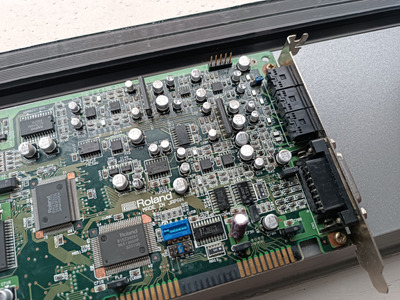First post, by appiah4
- Rank
- l33t++
I have been donated a Roland RAP-10. The part was given to along with the information that it does not work.
Apparently, it has had some extensive leaking capacitor problem and the previous owner had it recapped by an electronic service. The service has not done what I would call a commendable job with the recap, and appears to have lifted at least one trace which they shoddily bodged, but as far as I can test all the other capacitors have continuity from their terminals to the intended connections. The card was covered with flux but I did my best to clean that off with IPA.
The issue? It just doesn't work.
I am trying to get it working in a Socke 370 motherboard with a Celeron 333. It is jumpered for IRQ9 and Port330. I do not get any sound from it, when playing GM music, or when I try to get it detected in games that support it directly such as Abuse.
I get absolutely nothing out of the Line Out port, not even the slightest hiss or static. It's almost as if the card does not seem to get any power at all.
From what I can gather, it works on 5V from the ISA port alone, and the 5V on the card does not appear shorted.
I would really love to get this card working for my collection, but I don't know where to look and what to do. I have a multimeter and an oscilloscope. I am handy with a soldering iron. I am eager to get started 😀
Attached are photos of the card.. Help me VOGONS, you are my only hope.
Retronautics: A digital gallery of my retro computers, hardware and projects.



